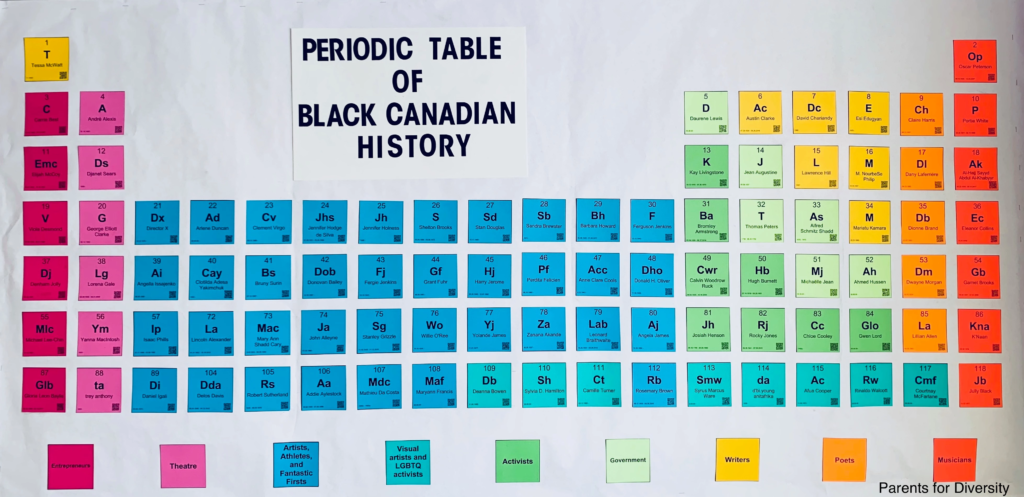Welcome to Black History Month!
Black History Month was first formally recognized in Canada in 1995 when the Honourable Jean Augustine, first Black Canadian woman elected to Parliament, introduced a motion that recognized February as Black History Month (BHM). It was passed unanimously in the House of Commons. BHM celebrates the rich and varied contributions of Canadians of African descent to every aspect of Canadian society and the long history of people of African descent in Canada. We must dedicate time to exploring and celebrating Canadians of African descents’ history because their achievements are too often erased or unacknowledged, and the real history of Canada remains invisible to many Canadians. We celebrate BHM as an opportunity to share the stories, voices and accomplishments of people of African descent to Canadian society. BHM allows us to reflect on why it is important to learn about Canada’s first Black Cabinet Minister, Commander-in-Chief, about the Coloured Hockey League, the No. 2 Construction Battalion, the Black train porters all named “George”; stories that have rarely been taught in classrooms.
The news of the racist “promposal” in Kemptville, Ontario last week has made the work of educating our children about the history of Canadians of African descent even more urgent. When students do not have an opportunity to explore histories, voices, and identities different from their own, they are unable to develop awareness about the diverse world in which they exist. They are likely to formulate misconceptions, biases and stereotypes about groups of people, which in turn manifests into racist behaviour, as evidenced by the incident at the Kemptville high school. When we present a curriculum to our students that does not reflect the lived experiences of the people of Canada, we limit their potential to become conscious, critical individuals, with an awareness about the world. When history is taught through a lens of white identity, the complex history and contributions of people of African descent is too often reduced to narratives about enslavement. The full humanity of people of African descent is excluded in favour of elevating the stories of white writers, colonizers, artists, scientists, and mathematicians.
The consequence of centering white identities in curricula are racist actions like the ones in Kemptville. Both white and racialized children are harmed by curricula that uphold white supremacy. Racialized children are directly impacted by such racist actions by being made to feel unsafe and unworthy in their own school. White children are also impacted by developing a false sense of superiority and by continuing to uphold and perpetuate practices and policies that harm racialized people. When curricula include a diversity of lived experiences, students internalize the idea that everyone’s humanity is valued and equally worthy. They also learn that lived experiences are impacted by identity, and learn to see the ways in which existing policies and practices disproportionately harm people of some identities while helping others.
This month our blog will delve into more about BHM over the course of the month, including a discussion of how families can explore and celebrate BHM, book recommendations, and the ways to incorporate the history of Canadians of African descents’ history and achievements every month. Look for new posts every Monday! We have previously offered tips for parents to ensure that BHM is being celebrated in ways that don’t result in cultural appropriation or reduction of Black Canadian culture to stereotypes. We also have a compilation of resources for teaching about BHM.
The Government of Canada’s theme for BHM 2024 is titled “Black Excellence: A Heritage to Celebrate; a Future to Build”. In this spirit, P4D is making available to the community a relaunch of this unique educational tool that highlights key elements of Black Canadian history.. Inspired by the Lakeland Public Library, we have created a Periodic Table of Black Canadian History. Each “element” is a Canadian of African descent who has made a significant contribution to Canada. Each square includes a scannable QR code so students linking to a website where students, educators, staff, and administration can read about the achievements of each person.

You can download the PDF of the Periodic Table to use for your school. Please feel free to share this resource so we can encourage more learning and celebrating the identities, experiences, and contributions of Black Canadians!
How is your school or class celebrating BHM? Share with us!




